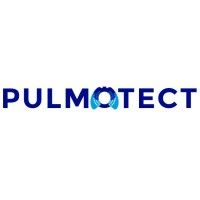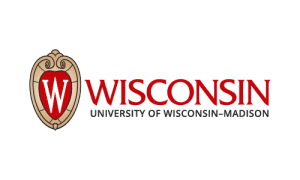预约演示
更新于:2025-05-07
Rhinovirus infection
鼻病毒感染
更新于:2025-05-07
基本信息
别名 DISEASES DUE TO RHINOVIRUS、Disease caused by Rhinovirus、Disease caused by Rhinovirus (disorder) + [19] |
简介 An infectious process caused by rhinovirus. The virus usually causes upper respiratory infections, but can infect the lower tract as well. |
关联
39
项与 鼻病毒感染 相关的药物靶点- |
作用机制 糖酵解抑制剂 [+1] |
在研机构 |
最高研发阶段批准上市 |
首次获批国家/地区 印度 |
首次获批日期2021-05-01 |
靶点 |
作用机制 PFOR抑制剂 |
在研机构 |
原研机构 |
非在研适应症 |
最高研发阶段批准上市 |
首次获批国家/地区 美国 |
首次获批日期2002-11-22 |
51
项与 鼻病毒感染 相关的临床试验NCT06665100
Efficacy and Safety of PUL-042 Inhalation Solution in Reducing Lower Respiratory Tract Complications in Patients With Hematologic Malignancies and Recipients of Hematopoietic Stem Cell Transplantation (HSCT) With Documented Viral Infections With PIV, hMPV or RSV
The purpose of this research study is to try to see whether an experimental drug, PUL 042 Inhalation Solution (PUL 042), is effective in reducing the severity of lung infections in patients with hematologic malignancies and recipients of hematopoietic stem cell transplantation with documented viral infections due to PIV, hMPV, or RSV. PUL-042 or a placebo will be administered 3 times over a 6-day period. The total duration of the study will be approximately 30 days.
开始日期2025-04-01 |
申办/合作机构  Pulmotect, Inc. Pulmotect, Inc. [+1] |
NCT03508479
Study of Airway Inflammatory Responses to Experimental Rhinovirus Infection
This study is designed to characterize in detail the clinical, physiologic, and inflammatory features of Human Rhinovirus (HRV) infection in healthy volunteers without underlying lung disease while also evaluating the safety of HRV administrations.
开始日期2024-12-01 |
NCT06931002
Human Bronchiectasis Rhinovirus Challenge to Define Immunopathogenesis of Exacerbation
The goal of this study is to determine if viral infection with the common cold leads to an exacerbation in participants with bronchiectasis. We will compare the participants with bronchiectasis to a group of healthy participants. The main questions it aims to answer are:
* Does viral infection with the common cold lead to an exacerbation in bronchiectasis?
* Does the immune response differ to that of a healthy participant?
Participants will attend for a screening visit to see if they are eligible. All participants who are eligible and have consented to take part will have baseline investigations done including blood tests and a bronchoscopy. They will be given a spray of a virus that causes the common cold into their nose. They will then be followed up over the next 6 weeks with some of the following procedures at each study visit; spirometry, nasosorption, nasal lavage, nasal brushing, blood test, sputum collection and a bronchoscopy. Participants will be asked to keep a daily record of their symptoms throughout the study.
* Does viral infection with the common cold lead to an exacerbation in bronchiectasis?
* Does the immune response differ to that of a healthy participant?
Participants will attend for a screening visit to see if they are eligible. All participants who are eligible and have consented to take part will have baseline investigations done including blood tests and a bronchoscopy. They will be given a spray of a virus that causes the common cold into their nose. They will then be followed up over the next 6 weeks with some of the following procedures at each study visit; spirometry, nasosorption, nasal lavage, nasal brushing, blood test, sputum collection and a bronchoscopy. Participants will be asked to keep a daily record of their symptoms throughout the study.
开始日期2024-07-24 |
申办/合作机构 |
100 项与 鼻病毒感染 相关的临床结果
登录后查看更多信息
100 项与 鼻病毒感染 相关的转化医学
登录后查看更多信息
0 项与 鼻病毒感染 相关的专利(医药)
登录后查看更多信息
1,660
项与 鼻病毒感染 相关的文献(医药)2025-04-01·Annals of Allergy, Asthma & Immunology
Unveiling the prevalence and impact of silent rhinovirus infection in chronic rhinosinusitis with nasal polyps
Article
作者: Liu, Fangying ; Xie, Xinyu ; Liu, Weiyuan ; Borish, Larry ; Ma, Xinyi ; Li, Changqing ; Guo, Shu ; Feng, Xin ; Shi, Xueyun ; Yuan, Ye ; Qi, Lijie ; Wang, Pin
2025-03-01·Translational Pediatrics
Clinical characteristics of single human rhinovirus infection and co-infection in the respiratory tract of children
Article
作者: Dai, Li-Zhong ; Yuan, Ke ; Shi, Yu-Ru ; Qi, Ying-Jie ; Liu, Jia-Xing ; Liu, Ting ; Yue, Li
2025-03-01·APMIS
Rhinoviral Infection of the Human Lung Vascular Endothelium May Protect From the Secondary Infection With Rhinovirus RV ‐16
Article
作者: Gawrysiak, Mateusz ; Chmiela, Magdalena ; Bekier, Adrian ; Michlewska, Sylwia ; Chałubiński, Maciej ; Gulbas, Izabela ; Gajewski, Adrian
23
项与 鼻病毒感染 相关的新闻(医药)2025-03-19
Treat underlying cause of COPD versus maintaining status quo of expensive, chronic therapies
COLLEGE PARK, Ga., March 19, 2025 /PRNewswire/ -- Altesa BioSciences, Inc., a clinical-stage pharmaceutical company dedicated to developing new treatments for viral infections in vulnerable populations, today announced that the U.S. Food and Drug Administration (FDA) has cleared Altesa's new Investigational New Drug (IND) application for vapendavir for the treatment of rhinovirus infections in people living with COPD. This milestone paves the way for Altesa to initiate clinical trials in the United States for this patient population.
"Viral infections are the primary cause of acute deteriorations in lung function and overall health for those living with COPD. Among viral causes, rhinovirus -- the predominant cause of the common cold -- is the most frequent," said Dr. Brett Giroir, CEO of Altesa BioSciences and former US Assistant Secretary for Health and former Acting FDA Commissioner. "The new IND allows us to advance our studies in COPD, already ongoing in the United Kingdom, into the United States." Altesa already has an open IND for vapendavir to treat rhinovirus infections in people with asthma."
Vapendavir, taken orally in pill form, is a broad-spectrum antiviral medicine that prevents the virus from entering human cells and reproducing. It exhibits potent activity across 97% of rhinoviruses and other respiratory enteroviruses. Altesa BioSciences holds exclusive global rights to develop, manufacture, and commercialize vapendavir.
More than 16.4 million Americans, or 6.6% of U.S. adults, suffer with COPD, which is now among the leading causes of death in the US and globally. Those with limited financial resources, especially those in urban and rural areas, are often diagnosed late, which is associated with worse overall outcomes.
In developing vapendavir, Altesa is applying Dr. Giroir's lessons learned from leading testing and diagnostics for the White House Coronavirus Task Force in 2020. Specifically, he said, "our investments in widely accessible diagnostics now enable treatment of the right patient, at the right time, with the right medicine." It is time to apply these lessons to viral infections that cause suffering in our vulnerable populations every year.
Vapendavir, Dr. Giroir continued, also holds strong promise to help other patient groups, including those with asthma, other lung diseases, and cancer, and for treating rhinovirus infections in children – a leading cause of pediatric hospitalizations. Altesa's goal is to prevent acute and chronic complications of viral infections in people at risk, and to disrupt the current paradigm of costly, chronic, immune-modifying therapies by instead treating the underlying cause of the acute disease.
For Media Inquiries Contact: Mia Heck
Cellular: 210.284.0388
Email: [email protected]
SOURCE Altesa Biosciences Inc.
WANT YOUR COMPANY'S NEWS FEATURED ON PRNEWSWIRE.COM?
440k+
Newsrooms &
Influencers
9k+
Digital Media
Outlets
270k+
Journalists
Opted In
GET STARTED
临床申请
2025-01-31
Ethris Presents Positive Topline Phase 1 Data with mRNA Lead Candidate ETH47 for Uncontrolled Asthma
MUNICH, Germany I January 30, 2025 I
Ethris GmbH
, a leading biotechnology company pioneering next-generation RNA therapeutics and vaccines, today announced promising topline data from the completed Phase 1 clinical trial of its lead mRNA therapeutic candidate, ETH47, in healthy volunteers. Designed to address the upstream trigger of asthma exacerbations, ETH47 encodes interferon lambda (IFNλ), a protein essential for viral immunity in the respiratory tract. These topline results provide the first clinical validation of Ethris’ pioneering targeted RNA therapeutic approach and its ability to induce a downstream cascade of antiviral interferon-stimulated genes locally following nasal administration. Thomas Langenickel, MD, Chief Medical Officer at Ethris, presented the results on January 30
th
, 2025, at the mRNA-Based Therapeutics Summit Europe in Frankfurt, Germany.
“These positive Phase 1 results reinforce the promise of ETH47 as a potentially safe and transformative treatment option for asthma patients, while also validating our SNIM
®
and SNaP
®
proprietary technology platforms as a viable delivery option for mRNA therapeutics to the respiratory tract,” said Dr. Thomas Langenickel, Chief Medical Officer at Ethris. “This significant milestone demonstrates the ability of our technology to deliver precisely designed mRNA candidates to the respiratory tract, facilitating production of the encoded protein and engagement with the intended target. With this strong foundation, we look forward to advancing ETH47 into Phase 2 trials in 2025 and remain committed to exploring its potential to transform care for patients with asthma and broader respiratory conditions.”
The Phase 1 study assessed the safety, tolerability, and target engagement of ETH47 after nasal administration in 40 healthy participants.
Key Results from the Phase 1 Study:
Based on the encouraging Phase 1 results, Ethris filed a Clinical Trial Application (CTA) for a Phase 2a rhinovirus challenge study in asthma patients, planned to begin in Q2 2025. This upcoming trial will focus on evaluating the ability of ETH47 to reduce lower respiratory symptoms in asthma patients following rhinovirus infection.
About ETH47
ETH47 is Ethris’ first-in-class mRNA-based product candidate encoding interferon lambda (IFNλ) that was developed using the company’s Stabilized Non-Immunogenic mRNA (SNIM
®
RNA) platform, and uniquely designed to be administered locally to the respiratory tract through inhalation or nasal spray using Ethris’ proprietary Stabilized NanoParticle (SNaP
®
) LNP platform. ETH47 is meant to induce a mucosal innate immune defense response at virus entry sites as well as inhibit viral replication. ETH47’s versatile, virus- and mutation-independent mode of action has the potential to broadly address seasonal and emerging respiratory virus infections, including virus-driven exacerbation of chronic respiratory diseases such as asthma.
About Uncontrolled Asthma
Uncontrolled asthma is a significant burden for patients, including 4.4 million moderate to severe asthma patients in the US alone. Approximately 80% of acute asthma attacks (exacerbations) are associated with virus infections. Asthma exacerbations cause excessive inflammation and mucus hyperproduction. They remain a significant burden for patients, leading to increased healthcare costs and decreased quality of life. ETH47’s innovative mechanism of action aims to prevent those exacerbations at their source, potentially improving outcomes for millions of patients worldwide.
About Ethris
Ethris, a clinical-stage biotechnology company, has paved a new path from genes to therapeutic proteins, using its proprietary RNA and lipidoid nanoparticle technology platforms to discover, design and develop innovative therapies. With more than a decade as an mRNA pioneer, Ethris is a global leader in delivering stabilized mRNAs directly to the respiratory system via optimized formulation and nebulization technologies. The company is rapidly advancing its mRNA pipeline of immuno-modulation, protein replacement therapies, and differentiated vaccines, with the ultimate goal of improving patients’ lives.
For more information, visit
www.ethris.com
SOURCE:
Ethris
临床1期疫苗信使RNAsiRNA免疫疗法
2025-01-30
Ethris Presents Positive Topline Phase 1 Data with mRNA Lead Candidate ETH47 for Uncontrolled Asthma
MUNICH, Germany--(
BUSINESS WIRE
)--
Ethris GmbH
, a leading biotechnology company pioneering next-generation RNA therapeutics and vaccines, today announced promising topline data from the completed Phase 1 clinical trial of its lead mRNA therapeutic candidate, ETH47, in healthy volunteers. Designed to address the upstream trigger of asthma exacerbations, ETH47 encodes interferon lambda (IFNλ), a protein essential for viral immunity in the respiratory tract. These topline results provide the first clinical validation of Ethris’ pioneering targeted RNA therapeutic approach and its ability to induce a downstream cascade of antiviral interferon-stimulated genes locally following nasal administration. Thomas Langenickel, MD, Chief Medical Officer at Ethris, presented the results on January 30
th
, 2025, at the mRNA-Based Therapeutics Summit Europe in Frankfurt, Germany.
“These positive Phase 1 results reinforce the promise of ETH47 as a potentially safe and transformative treatment option for asthma patients, while also validating our SNIM
®
and SNaP
®
proprietary technology platforms as a viable delivery option for mRNA therapeutics to the respiratory tract,” said Dr. Thomas Langenickel, Chief Medical Officer at Ethris. “This significant milestone demonstrates the ability of our technology to deliver precisely designed mRNA candidates to the respiratory tract, facilitating production of the encoded protein and engagement with the intended target. With this strong foundation, we look forward to advancing ETH47 into Phase 2 trials in 2025 and remain committed to exploring its potential to transform care for patients with asthma and broader respiratory conditions.”
The Phase 1 study assessed the safety, tolerability, and target engagement of ETH47 after nasal administration in 40 healthy participants.
Key Results from the Phase 1 Study:
Safety and tolerability: ETH47 was generally safe and well tolerated across all dose levels, with no serious or severe adverse events and no adverse events leading to discontinuation reported in the healthy participants. The study also demonstrated no systemic bioavailability of the mRNA, the produced protein IFNλ, or the proprietary lipidoid compound, minimizing the risk of off-target effects.
Dose-dependent target engagement: ETH47 exhibited a clear dose-dependent production of IFNλ in the nasal lining fluid exceeding predicted therapeutic levels. ETH47 administration also activated the mRNA expression of antiviral interferon-stimulated genes (ISGs) in nasal brush samples. These findings confirm ETH47’s pharmacodynamic activity and support its proposed mechanism of action.
Based on the encouraging Phase 1 results, Ethris filed a Clinical Trial Application (CTA) for a Phase 2a rhinovirus challenge study in asthma patients, planned to begin in Q2 2025. This upcoming trial will focus on evaluating the ability of ETH47 to reduce lower respiratory symptoms in asthma patients following rhinovirus infection.
About ETH47
ETH47 is Ethris’ first-in-class mRNA-based product candidate encoding interferon lambda (IFNλ) that was developed using the company’s Stabilized Non-Immunogenic mRNA (SNIM
®
RNA) platform, and uniquely designed to be administered locally to the respiratory tract through inhalation or nasal spray using Ethris’ proprietary Stabilized NanoParticle (SNaP
®
) LNP platform. ETH47 is meant to induce a mucosal innate immune defense response at virus entry sites as well as inhibit viral replication. ETH47’s versatile, virus- and mutation-independent mode of action has the potential to broadly address seasonal and emerging respiratory virus infections, including virus-driven exacerbation of chronic respiratory diseases such as asthma.
About Uncontrolled Asthma
Uncontrolled asthma is a significant burden for patients, including 4.4 million moderate to severe asthma patients in the US alone. Approximately 80% of acute asthma attacks (exacerbations) are associated with virus infections. Asthma exacerbations cause excessive inflammation and mucus hyperproduction. They remain a significant burden for patients, leading to increased healthcare costs and decreased quality of life. ETH47’s innovative mechanism of action aims to prevent those exacerbations at their source, potentially improving outcomes for millions of patients worldwide.
About Ethris
Ethris, a clinical-stage biotechnology company, has paved a new path from genes to therapeutic proteins, using its proprietary RNA and lipidoid nanoparticle technology platforms to discover, design and develop innovative therapies. With more than a decade as an mRNA pioneer, Ethris is a global leader in delivering stabilized mRNAs directly to the respiratory system via optimized formulation and nebulization technologies. The company is rapidly advancing its mRNA pipeline of immuno-modulation, protein replacement therapies, and differentiated vaccines, with the ultimate goal of improving patients’ lives.
For more information, visit
www.ethris.com
临床1期疫苗临床结果信使RNAsiRNA
分析
对领域进行一次全面的分析。
登录
或

生物医药百科问答
全新生物医药AI Agent 覆盖科研全链路,让突破性发现快人一步
立即开始免费试用!
智慧芽新药情报库是智慧芽专为生命科学人士构建的基于AI的创新药情报平台,助您全方位提升您的研发与决策效率。
立即开始数据试用!
智慧芽新药库数据也通过智慧芽数据服务平台,以API或者数据包形式对外开放,助您更加充分利用智慧芽新药情报信息。
生物序列数据库
生物药研发创新
免费使用
化学结构数据库
小分子化药研发创新
免费使用





